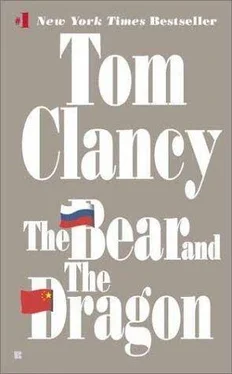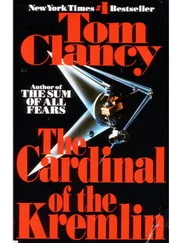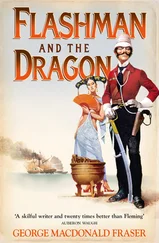Tom Clancy - The Bear and the Dragon
Здесь есть возможность читать онлайн «Tom Clancy - The Bear and the Dragon» весь текст электронной книги совершенно бесплатно (целиком полную версию без сокращений). В некоторых случаях можно слушать аудио, скачать через торрент в формате fb2 и присутствует краткое содержание. Год выпуска: 2001, ISBN: 2001, Жанр: Триллер, на английском языке. Описание произведения, (предисловие) а так же отзывы посетителей доступны на портале библиотеки ЛибКат.
- Название:The Bear and the Dragon
- Автор:
- Жанр:
- Год:2001
- ISBN:780425180969
- Рейтинг книги:3 / 5. Голосов: 1
-
Избранное:Добавить в избранное
- Отзывы:
-
Ваша оценка:
- 60
- 1
- 2
- 3
- 4
- 5
The Bear and the Dragon: краткое содержание, описание и аннотация
Предлагаем к чтению аннотацию, описание, краткое содержание или предисловие (зависит от того, что написал сам автор книги «The Bear and the Dragon»). Если вы не нашли необходимую информацию о книге — напишите в комментариях, мы постараемся отыскать её.
The Bear and the Dragon — читать онлайн бесплатно полную книгу (весь текст) целиком
Ниже представлен текст книги, разбитый по страницам. Система сохранения места последней прочитанной страницы, позволяет с удобством читать онлайн бесплатно книгу «The Bear and the Dragon», без необходимости каждый раз заново искать на чём Вы остановились. Поставьте закладку, и сможете в любой момент перейти на страницу, на которой закончили чтение.
Интервал:
Закладка:
Bronco Winters didn’t look much like Errol Flynn, but that was okay. You couldn’t tell a warrior by the look of his face, though you could by the look on his face. He was a fighter pilot. As a youngster in New York, he’d ride the subway to La Guardia Airport, just to stand at the fence and watch the airplanes take off and land, knowing even then that he wanted to fly. He’d also known that fighters would be more fun than airliners, and known finally that to fly fighters he had to enter a service academy, and to do that he’d have to study. And so he’d worked hard all through school, especially in math and science, because airplanes were mechanical things, and that meant that science determined how they worked. So, he was something of a math whiz-that had been his college major at Colorado Springs-but his interest in it had ended the day he’d walked into Columbus Air Force Base in Mississippi, because once he got his hands on the controls of an aircraft, the “study” part of his mission was accomplished, and the “learning” part really began. He’d been the number one student in his class at Columbus, quickly and easily mastering the Cessna Tweety Bird trainer, and then moving on to fighters, and since he’d been number one in his class, he’d gotten his choice-and that choice, of course, had been the F-15 Eagle fighter, the strong and handsome grandson of the F-4 Phantom. An easy plane to fly, it was a harder one to fight, since the controls for the combat systems are located on the stick and the throttles, all in buttons of different shapes so that you could manage all the systems by feel, and keep your eyes up and out of the aircraft instead of having to look down at instruments. It was something like playing two pianos at the same time, and it had taken Winters a disappointing six months to master. But now those controls came as naturally as twirling the wax into his Bismarck mustache, his one non-standard affectation, which he’d modeled on Robin Olds, a legend in the American fighter community, an instinctive pilot and a thinking-and therefore a very dangerous-tactician. An ace in World War II, an ace in Korea, and also an ace over North Vietnam, Olds was one of the best who’d ever strapped a fighter plane to his back, and one whose mustache had made Otto von Bismarck himself look like a pussy.
Colonel Winters wasn’t thinking about that now. The thoughts were there even so, as much a part of his character as his situational awareness, the part of his brain that kept constant track of the three-dimensional reality around him at all times. Flying came as naturally to him as it did to the gyrfalcon mascot at the Air Force Academy. And so did hunting, and now he was hunting. His aircraft had instrumentation that downloaded the take from the AWACS aircraft a hundred fifty miles to his rear, and he divided his eye time equally between the sky around him and the display three feet from his 20–10 brown eyes …
… there … two hundred miles, bearing one-seven-two, four bandits heading north. Then four more, and another flight of four. Joe Chink was coming up to play, and the pigs were hungry.
“Boar Lead, this is Eagle Two.” They were using encrypted burst-transmission radios that were very difficult to detect, and impossible to listen in on.
“Boar Lead.” But he kept his transmission short anyway. Why spoil the surprise?
“Boar Lead, we have sixteen bandits, one-seven-zero your position at angels thirty, coming due north at five hundred knots.”
“Got ’em.”
“They’re still south of the border, but not for long,” the young controller on the E-3B advised. “Boar, you are weapons-free at this time.”
“Copy weapons-free,” Colonel Winters acknowledged, and his left hand flipped a button to activate his systems. A quick look down to his weapons-status display showed that everything was ready to fire. He didn’t have his tracking/targeting radar on, though it was in standby mode. The F-15 had essentially been designed as an appendage to the monstrous radar in its nose-a design consideration that had defined the size of the fighter from the first sketch on paper-but over the years the pilots had gradually stopped using it, because it could warn an enemy with the right sort of threat receiver, telling him that there was an Eagle in the neighborhood with open eyes and sharp claws. Instead he could now cross-load the radar information from the AWACS, whose radar signals were unwelcome, but nothing an enemy could do anything about, and not directly threatening. The Chinese would be directed and controlled by ground radar, and the Boars were just at the fuzzy edge of that, maybe spotted, maybe not. Somewhere to his rear, a Rivet Joint EC-135 was monitoring both the radar and the radios used by the Chinese ground controllers, and would cross-load any warnings to the AWACS. But so far none of that. So, Joe Chink was coming north.
“Eagle, Boar, say bandit type, over.”
“Boar, we’re not sure, but probably Sierra-Uniform Two-Sevens by point of origin and flight profile, over.”
“Roger.” Okay, good, Winters thought. They thought the Su-27 was a pretty hot aircraft, and for a Russian-designed bird it was respectable. They put their best drivers into the Flanker, and they’d be the proud ones, the ones who thought they were as good as he was. Okay, Joe, let’s see how good you are. “Boar, Lead, come left to one-three-five.”
“Two.” “Three.” “Four,” the flight acknowledged, and they all banked to the left. Winters took a look around to make sure he wasn’t leaving any contrails to give away his position. Then he checked his threat receiver. It was getting some chirps from Chinese search radar, but still below the theoretical detection threshold. That would change in twenty miles or so. But then they’d just be unknowns on the Chinese screens, and fuzzy ones at that. Maybe the ground controllers would radio a warning, but maybe they’d just peer at their screens and try to decide if they were real contacts or not. The robin’s-egg blue of the Eagles wasn’t all that easy to spot visually, especially when you had the sun behind you, which was the oldest trick in the fighter-pilot bible, and one for which there was still no solution …
The Chinese passed to his right, thirty miles away, heading north and looking for Russian fighters to engage, because the Chinese would want to control the sky over the battlefield they’d just opened up. That meant that they’d be turning on their own search radars, and when that happened, they’d spend most of their time looking down at the scope instead of out at the sky, and that was dangerous. When he was south of them, Winters brought his flight right, west, and down to twenty thousand feet, well below Joe Chink’s cruising altitude, because fighter pilots might look back and up, but rarely back and down, because they’d been taught that height, like speed, was life. And so it was … most of the time. In another three minutes, they were due south of the enemy, and Winters increased power to maximum dry thrust so as to catch up. His flight of four split on command into two pairs. He went left, and then his eyes spotted them, dark flecks on the brightening blue sky. They were painted the same light gray the Russians liked-and that would be a real problem if Russian Flankers entered the area, because you didn’t often get close enough to see if the wings had red stars or white-blue-red flags painted on them.
The audio tone came next. His Sidewinders could see the heat bloom from the Lyul’ka turbofan engines, and that meant he was just about close enough. His wingman, a clever young lieutenant, was now about five hundred yards to his right, doing his job, which was covering his leader. Okay, Bronco Winters thought. He had a good hundred knots of overtake speed now.
Читать дальшеИнтервал:
Закладка:
Похожие книги на «The Bear and the Dragon»
Представляем Вашему вниманию похожие книги на «The Bear and the Dragon» списком для выбора. Мы отобрали схожую по названию и смыслу литературу в надежде предоставить читателям больше вариантов отыскать новые, интересные, ещё непрочитанные произведения.
Обсуждение, отзывы о книге «The Bear and the Dragon» и просто собственные мнения читателей. Оставьте ваши комментарии, напишите, что Вы думаете о произведении, его смысле или главных героях. Укажите что конкретно понравилось, а что нет, и почему Вы так считаете.






![Александр Ирвин - Tom Clancy’s The Division 2. Фальшивый рассвет [litres]](/books/417744/aleksandr-irvin-tom-clancy-s-the-division-2-falsh-thumb.webp)




